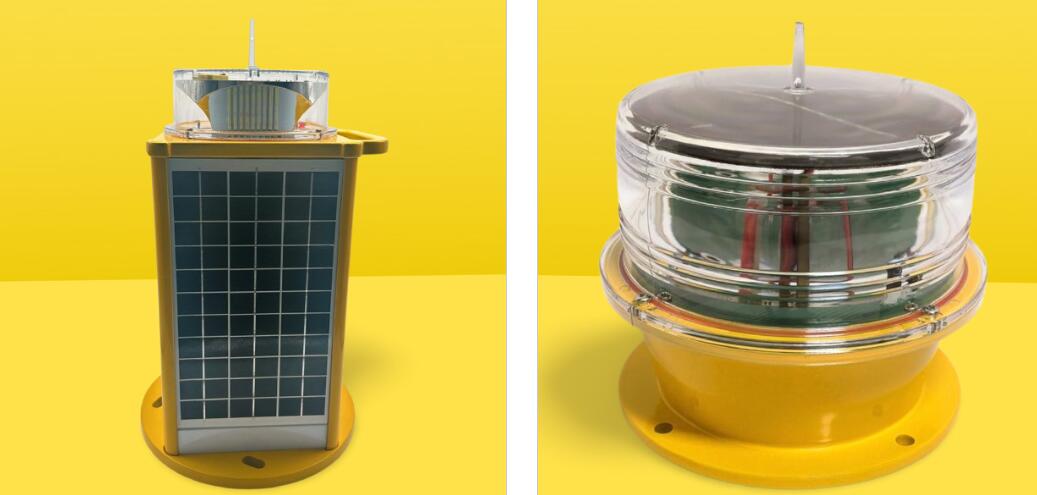Solar Aviation Obstruction Light: A Sustainable Solution for Air Safety
As the world shifts toward renewable energy, solar aviation obstruction lights have emerged as an efficient and eco-friendly solution for marking tall structures. These lights ensure aviation safety by making towers, wind turbines, and other high-rise structures visible to pilots, while reducing dependence on grid electricity. This article explores the benefits, working principles, and best practices for implementing solar aviation obstruction lights in modern airspace safety systems.
The Need for Solar-Powered Obstruction Lighting
Traditional obstruction lights rely on grid power, which can be unreliable in remote locations. Solar aviation obstruction lights offer a sustainable alternative, particularly for:
Offshore wind farms where electrical infrastructure is limited.
Remote communication towers in mountainous or rural areas.

Temporary construction sites requiring quick deployment.
By harnessing solar energy, these lights provide uninterrupted operation while minimizing environmental impact.
How Solar Aviation Obstruction Lights Work
A typical solar aviation obstruction light system consists of:
| Solar Aviation Obstruction Light |
Solar Panels – Capture sunlight and convert it into electrical energy.
Battery Storage – Stores energy for use during nighttime or cloudy conditions.
LED Lighting Module – High-efficiency LEDs provide bright, long-lasting illumination.
| Solar Aviation Obstruction Lights |
Control System – Regulates charging, discharging, and light intensity.
Most systems are designed with auto-dimming capabilities, adjusting brightness based on ambient light conditions to conserve energy.
Advantages of Solar Aviation Obstruction Lights
1. Energy Efficiency & Sustainability
Operates entirely on renewable energy.
Reduces carbon footprint compared to conventional systems.
2. Cost-Effective Operation
Eliminates electricity bills and reduces maintenance needs.
Long-lasting LED bulbs minimize replacements.
3. Easy Installation & Flexibility
No need for extensive wiring or grid connections.
Ideal for temporary or mobile installations.
4. Reliability in Remote Locations
Functions independently of power grids.
Weather-resistant designs ensure durability in harsh environments.
Key Applications
1. Wind Turbines
Offshore and onshore wind farms use solar aviation obstruction lights to comply with aviation regulations.
2. Telecommunication Towers
Ensures visibility in areas with unstable power supply.
3. Construction Cranes
Temporary solar-powered lights improve safety during building projects.
4. Power Transmission Lines
Marks tall pylons to prevent aircraft collisions.
Best Practices for Deployment
1. Optimal Solar Panel Placement
Ensure maximum sunlight exposure by avoiding shading.
Angle panels correctly based on geographic location.
2. Battery Maintenance
Use high-capacity, deep-cycle batteries for longer backup.
Regularly check battery health to prevent failures.
3. Compliance with Aviation Standards
Follow FAA, ICAO, or local regulations for light intensity and placement.
Conduct periodic inspections to ensure functionality.
4. Weatherproofing
Choose corrosion-resistant materials for coastal or high-altitude installations.
Ensure waterproof sealing to protect electronics.
Future Innovations
1. Smart Monitoring Systems
IoT-enabled lights can send real-time alerts for maintenance needs.
2. Hybrid Solar/Wind Systems
Combining solar panels with small wind turbines for enhanced reliability.
3. Advanced Light Sensors
Adaptive brightness control based on real-time visibility conditions.
Solar aviation obstruction lights represent a forward-thinking approach to aviation safety, combining sustainability with high performance. As renewable energy adoption grows, these systems will become increasingly vital for marking tall structures in both urban and remote areas. By leveraging solar technology, industries can enhance air safety while supporting global environmental goals.
